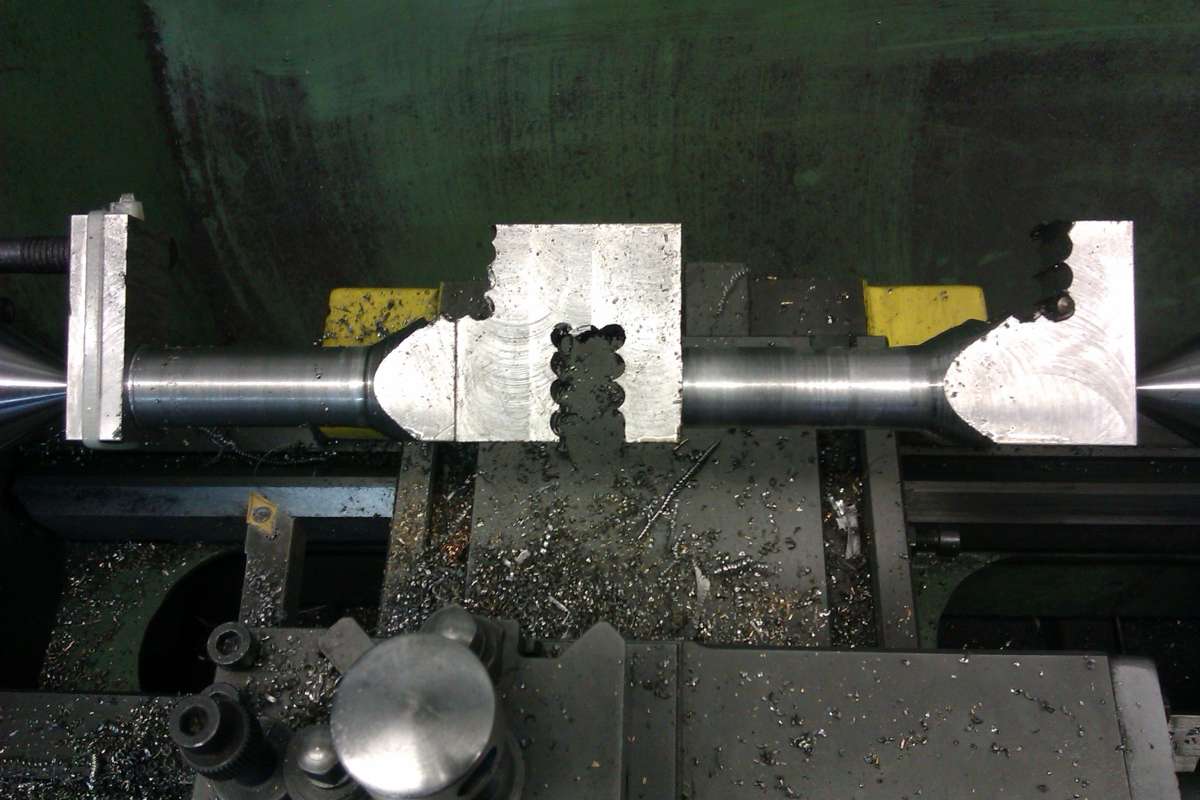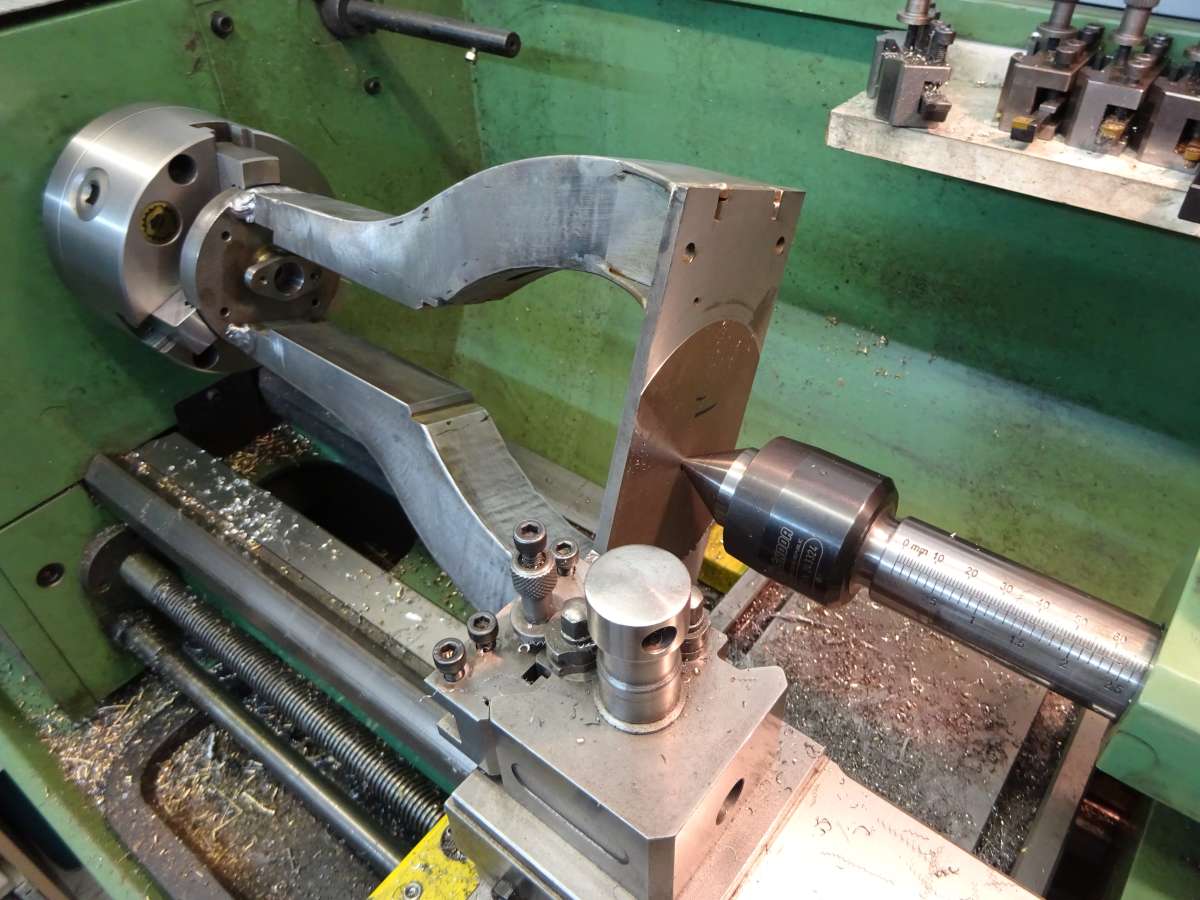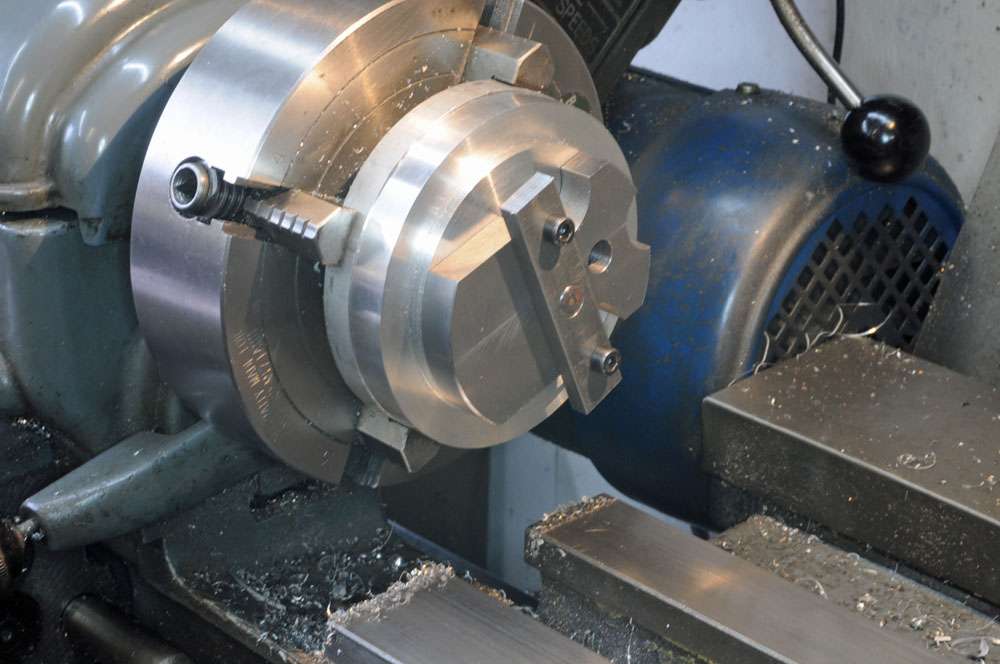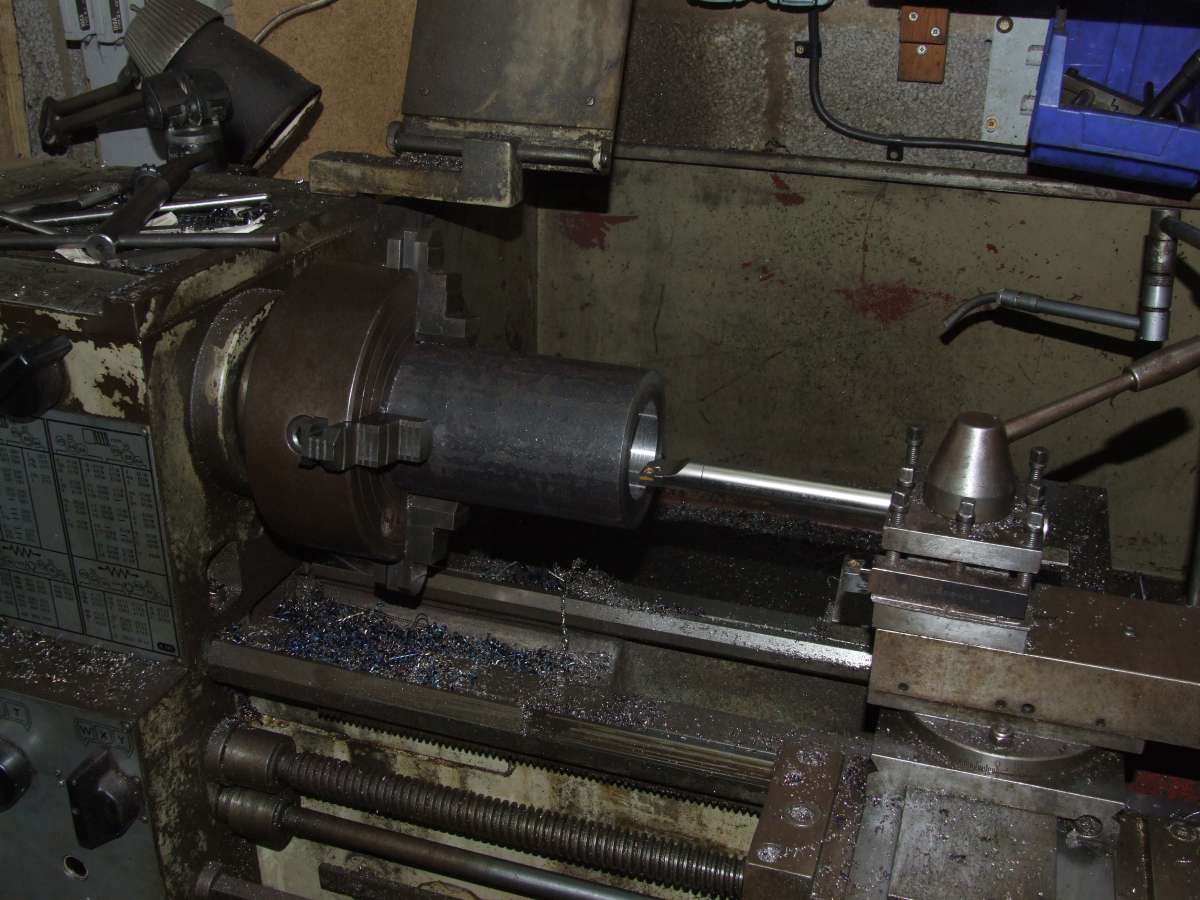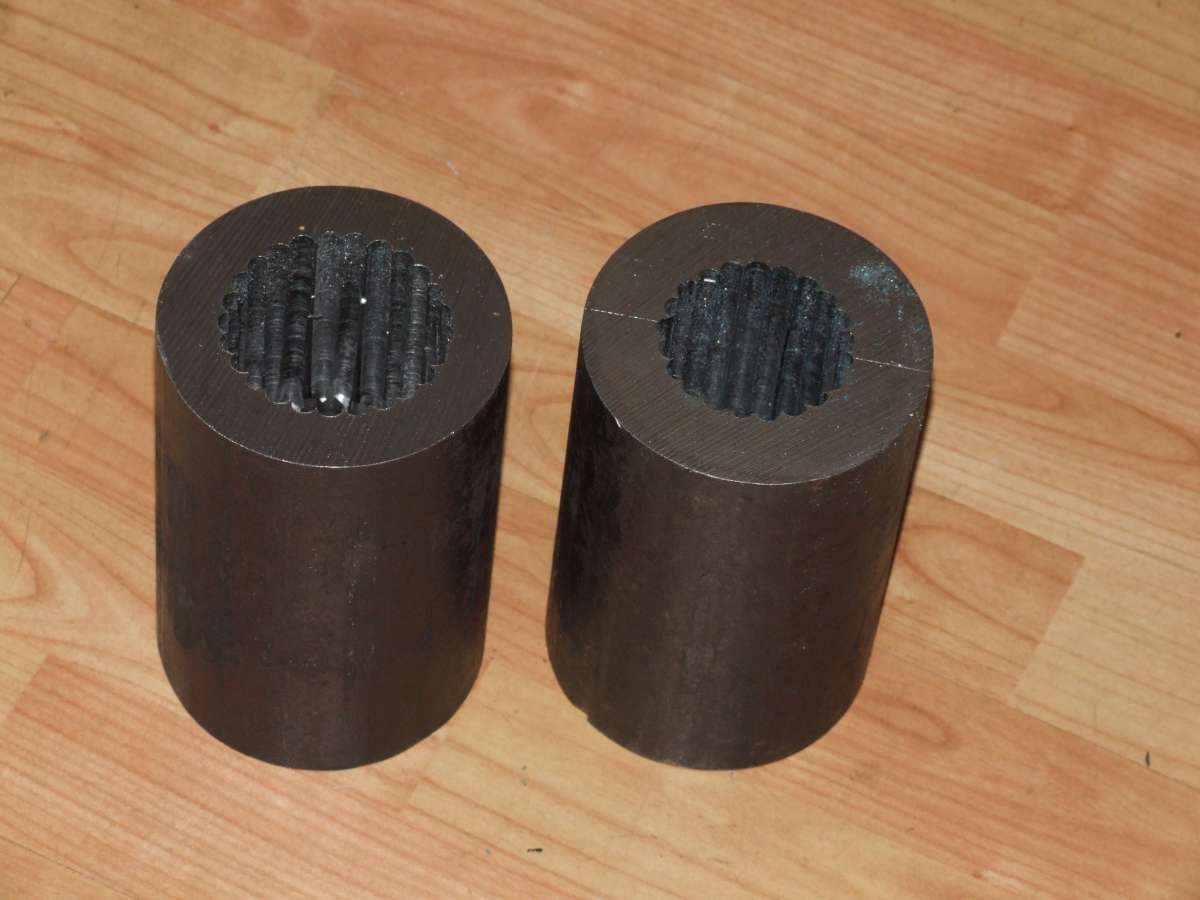As a general rule I try to minimise interrupted cuts as much as possible, with any type of tool, and the larger the radius the less I like them.
That is not just a matter of what the tool can handle, but also the hammering effect on the lathe. I don’t often use fly-cutting on the mill, for the same reason.
If I need machine a chain-drilled surface I always remove the worst of the ridges first, by filing or (less often and certainly not as first choice) grinding.
On my manual shaper, I file a chamfer on the approach edge first to take some of the shock out of the action.
Regarding speeds and feeds, I must admit I do not sit down with a calculator first! I judge the action by watching and listening; and quite honestly have never found any real problems using carbide tips at modest speeds.
.
One exception is some mild steel of unknown parentage and even less quality-control, originally the tie-rods for a big cable-drum. It tears dreadfully with carbide but a sharp HSS tool, cutting oil and experimenting with speeds and feeds brings acceptable results for the intended purposes (not fine-finish moving parts, and often painted).
The alleged steel stocked by a certain DIY supermarket chain is similar, and sometimes so rough and approximate to diameter it has to be skimmed before die-threading, but again, I use this only for non-critical applications.
On a model it would be for parts that on the full-size were likely to have been just brush-painted over hot-rolled or forged surfaces – tie-rods, brackets and the like.
MikeK.



